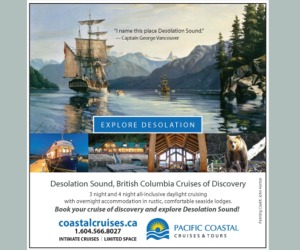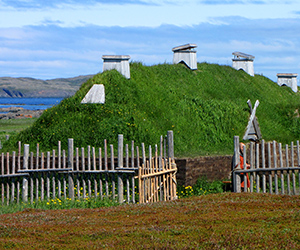CANADA HISTORY
Newfoundland

The decision of Newfoundland to join Canadian Confederation in 1949 marked a turning point in the history of both Newfoundland and Canada. The events that led to this decision are deeply significant for Canadian history, as they reflect a complex interplay of geopolitical, economic, and cultural forces. Newfoundland’s path to confederation, shaped by the turmoil of the Great Depression, the experiences of World War II, and post-war global shifts, was an extended process of national self-determination that ultimately resulted in the addition of the tenth province to Canada.
Newfoundland’s Early Independence
When the Canadian provinces of Ontario, Quebec, New Brunswick, and Nova Scotia formed Confederation in 1867, Newfoundland, despite being invited, chose not to join. It remained a self-governing British colony, electing to chart its own course within the British Empire. This decision reflected Newfoundland’s long-standing maritime economy, based on the fishing industry, which had distinct interests from those of the rest of Canada. While the rest of the Maritimes entered into Confederation by 1871, Newfoundland saw little reason to unite with Canada. It viewed itself as economically stable and culturally distinct, enjoying a relatively prosperous position within the broader British Empire.
The 1895 Negotiations for Union
Negotiations between Newfoundland and Canada for possible union began once in the 19th century, in 1895. However, these talks quickly faltered, as there was little economic or political incentive for either party to push for confederation. Newfoundland, despite economic difficulties in the latter half of the century, retained its independence, believing that its position as a self-sufficient entity within the British Empire was preferable to union with Canada. Similarly, Canada was not yet eager to invest the resources necessary to incorporate the island, and the negotiations fizzled out without a resolution.
Economic Pressures and the Impact of the Great Depression
Newfoundland’s decision to remain independent through the 19th century and into the 20th century eventually led to a crisis during the Great Depression. The global economic collapse severely affected Newfoundland’s economy, which was heavily dependent on fishing exports. The island’s financial system became unsustainable, and by 1934, Newfoundland’s economy had crumbled. The island was forced to surrender its self-government and revert to direct rule from Britain through a system known as "Commission of Government." This government, imposed to stabilize the economy, consisted of six British-appointed commissioners who would oversee Newfoundland’s affairs until it regained financial stability.
This period of direct British rule lasted for over a decade, a significant interruption to Newfoundland’s autonomy. The deep economic struggles of the 1930s left the population weary and unsure of the best path forward, especially as they entered the era of the Second World War.
Newfoundland During the Second World War
World War II had a profound impact on Newfoundland and its people. Although it was not a member of the Canadian Confederation, Newfoundland was an active participant in the war effort, providing both manpower and strategic resources. Its geographical location, at the mouth of the North Atlantic, made it a crucial hub for military operations. Thousands of American troops were stationed in Newfoundland during the war, establishing bases to protect convoys and coordinate with the British and Canadian forces. The presence of the Americans brought an infusion of cash, infrastructure development, and modernization, particularly in transportation and communication systems.
The American influence in Newfoundland during the war was substantial, and many Newfoundlanders became enamored with the efficiency, wealth, and lifestyle the Americans brought to the island. This newfound exposure to American culture began to raise questions about Newfoundland’s future. In the post-war period, there were increasing calls to either remain under British protection, join Canada, or possibly even pursue union with the United States.
Post-War Rebuilding and the Path to Confederation
As World War II came to an end in 1945, Newfoundland found itself at a crossroads. Its economic prospects had improved somewhat during the war, thanks to the influx of American dollars and war-related industries, but the long-term sustainability of its economy was still in question. The question of Newfoundland’s future governance became a pressing issue. In discussions with Canada, Britain made it clear that it would not be able to afford post-war support for Newfoundland, and the British government quietly favored union with Canada as a solution to Newfoundland’s problems. This position was also motivated by geopolitical concerns, as Britain sought to prevent Newfoundland from aligning too closely with the United States.
A National Convention was convened in Newfoundland on December 11, 1945, to debate the island's future. Several options were put forward, including continued rule by Britain, independence, or confederation with Canada. The most prominent voice advocating for confederation was Joey Smallwood, a journalist and radio host who believed that union with Canada would provide Newfoundland with the economic stability and social support it needed. Smallwood argued that Canada’s established programs, particularly in health care, education, and social services, would benefit Newfoundlanders more than independence or continued British rule. He also saw confederation as a way for Newfoundland to maintain its British parliamentary traditions while gaining access to the economic opportunities that came with being part of a larger federation.
The 1948 Referendums
The debate over Newfoundland’s future culminated in a referendum held on June 3, 1948. The options presented to the public were to continue with commission government under Britain, re-establish responsible government, or join Canada in confederation. The results were close: 44.6% voted for responsible government, 41.1% voted for confederation, and 14.3% voted to continue with commission government. Since no option won a clear majority, a second referendum was scheduled.
The second referendum, held on July 22, 1948, posed a direct choice between responsible government and confederation with Canada. This time, confederation won with 52.3% of the vote. Smallwood’s campaign had successfully convinced a narrow majority of Newfoundlanders that joining Canada was the best path forward. Most Newfoundlanders recognized that responsible government would likely be the first step towards deeper ties with the United States, but the Canadian option promised stability and security. As a result, Newfoundland officially joined Canada on March 31, 1949, becoming the country’s tenth province, with Joey Smallwood as its first Premier.
The Significance of Newfoundland’s Confederation
The decision of Newfoundland to join Canada had profound implications for both Newfoundland and Canada as a whole. For Newfoundland, confederation represented the beginning of a new chapter in its history, one in which it would be integrated into the social, economic, and political fabric of Canada. Although some Newfoundlanders initially opposed confederation and lamented the loss of their independence, the island benefited from Canadian social programs, infrastructure investments, and economic development initiatives. Over time, Newfoundland’s integration into Canada provided a level of stability that would have been difficult to achieve through independence or continued reliance on Britain.
For Canada, Newfoundland’s entry into Confederation was an important geopolitical and economic gain. The addition of Newfoundland expanded Canada’s territory, provided access to strategic resources such as fisheries and oil reserves, and strengthened its position in the North Atlantic. It also reinforced Canada’s identity as a diverse and growing federation, capable of accommodating distinct regions and cultures within its political structure. The incorporation of Newfoundland into the Canadian fold solidified the country's presence in the North Atlantic and allowed it to assert its sovereignty over this key area of the globe during the early Cold War.
The union of Newfoundland and Canada in 1949 was a momentous event in Canadian history. It represented the culmination of long-standing debates over Newfoundland’s future and the broader process of nation-building in Canada. While the journey to confederation was complex and often contentious, it ultimately brought Newfoundland into the Canadian family, ensuring its economic future and its place within the Commonwealth. For Canada, Newfoundland’s entry was a symbol of the country’s growing strength and unity, while for Newfoundlanders, it marked a new beginning, one that would shape the island’s destiny for generations to come.
Cite Article : www.canadahistory.com/sections/documents




